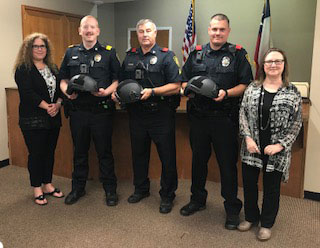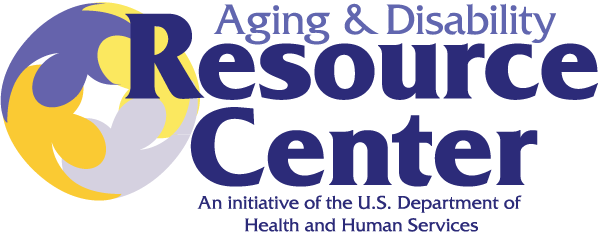
Bonham Police Department receives Ballistic Helmets from TCOG
May 3, 2018
TCOG’s ADRC Announces New Educational Series
June 6, 20182019-2021 Community Needs Assessment

Qualitative Data
Client Lifecycle Results
| Table 14: TCOG Client Lifecycle Study, Presenting Problems | |
|---|---|
| Presenting Problems | |
1. | Health Issues / Mental Health (Availability and Access to Practitioners and Facilities) |
| 2. | Inability to Pay Basic Household Needs, Especially Utilities |
| 3. | Housing Issues – Access to and Availability of Safe, Affordable Housing; Rental Assistance |
| 4. | Financial Issues Arising from Asset Poverty and Under-Employment |
| 5. | Transportation Issues, Especially to Medical Appointments or to Jobs |
| Source: September, 2017 to January 1, 2018 Client Lifecycle Interviews | |
From September, 2017 through December, 2017, staff at TCOG conducted qualitative interviews with 423 of TCOG’s clients. Trends in presenting problems, unmet needs, and presence of a support system were captured, and then extracted using word search and hyper-search techniques. Table 14 above shows the five most-mentioned presenting problems. (Data were not collected by county, but TCOG staff believe these are fairly consistent across the Texoma region). As shown above, the number one area of concern centered on health issues, both availability and access to both practitioners and facilities, with mental health specifically mentioned numerous times. As will be shown, mental health issues will show up in other data below. The number two area of concern was a lack of assets to pay for basic household needs, especially utility bills, chief being electricity. (As will be noted later, living in or near poverty makes survival a series of prioritization of choices; should money this month go to medications and food, knowing there will not be enough money to pay rent, or utilities?) Availability of, and access to safe, affordable housing is a recurring theme. It is noted that the Texoma region has housing issues across all income and wealth lines, and there are some specific efforts being made to help with affordable housing. As noted above, financial issues, especially those related to asset poverty and being among the “working poor” are presented as needs. Transportation issues, especially transportation to and from medical facilities and jobs complete the top five. Clients were asked about unmet needs, or gaps in services they experience. The results are shown in Table 15 below.
| Table 15: TCOG Client Lifecycle, Unmet Needs | |
|---|---|
| "Gaps" in Service / Unmet Needs | |
1. | Housing Issues – Access and Availability to Safe, Affordable Housing; Rental Assistance |
| 2. | Transportation Issues, Especially to Medical Appointments or to Jobs |
| 3. | Mental Health Concerns (Availability and Access to Practitioners and Facilities) |
| 4. | Respite Time for Caregivers, Especially for Alzheimer’s and Parkinson’s |
| 5. | Educational Issues, Especially Lack of Early Childhood Education and/or Childcare |
| Source: September, 2017 to January 1, 2018 Client Lifecycle Interviews | |
Access to and availability of safe and affordable housing, including rental assistance, emerged as the top unmet need. Specifically, there is a need for safe, livable, affordable housing, again across the region, but particularly in Fannin and Grayson counties. Transportation rises to number two on the unmet needs list. This is particularly acute in Fannin and to some extent in Cooke – the physicians and health care facilities in the region are concentrated in the Sherman-Denison corridor, and the poor, disabled, and elderly in Fannin and Cooke counties have difficulty accessing these physicians and facilities. Availability of, and access to Mental health care providers and facilities, number one in presenting problems, shows on this list of unmet needs also. Respite needs and educational issues, especially the need for expanded early childhood education, complete the top five. TCOG currently provides several respite programs, so this may be a matter of capacity. Early childhood educational issues have emerged on other, unrelated studies, and may contribute, or correlate, with the childhood poverty issues cited earlier in the report.
Clients in the Lifecycle Project were also asked about their support system. These findings are shown in Table 16, below.
| Table 16: TCOG Client Lifecycle, Support System | ||
|---|---|---|
| Support System | ||
1. | None | 159 |
| 2. | Family Member(s) | 106 |
| 3. | Friends | 46 |
| 4. | Church / Church Family | 18 |
| 5. | Caregiver | 5 |
| 6. | Neighbors | 5 |
| Source: September, 2017 to January 1, 2018 Client Lifecycle Interviews | ||
A very disturbing finding is that the number one response was “I don’t have one.” TCOG serves vulnerable populations, and this study shows that relatively large numbers of those vulnerable clients have no support system at all. Of those who had support systems, the modal response was family, followed by friends. Also disturbing was the relatively few clients who have a church family, caregiver, or neighbors in their support systems.
Community Focus Group Findings
Focus groups were held in each county. Groups were recruited via email invitation and by telephone calls. Program participants included Section 8 Family Self-Sufficiency, MasterKey Ministries, Public Housing, Utility Assistance and Weatherization. Molly Guard, GIS Program Manager, facilitated the groups in all three counties; Judy Fullylove, Energy Services Director, recorded participant comments. Topics covered ranged from types of services received, gaps in services, satisfaction with services, and respect of clients by service providers. Focus groups were held in each county.
Focus group findings, by county, are shown in Table 17 below.
| Table 17: CSBG Community Needs Assessment Focus Group Summary | ||
|---|---|---|
| Fannin | Grayson | Cooke |
Utility Assistance | Childcare – Accessible/Affordable | Utility Assistance |
| Transportation Issues | Transportation Issues | Medical Issues |
| Medical Issues | Medical Issues | Transportation Issues |
| Childhood Poverty | Lack of Access to Food | Housing Issues |
| Need for Jobs | Lack of Early Childhood Education | Need for Jobs |
| Affordable Housing | Emergency/Affordable Housing | — |
| Source: TCOG Directed Focus Groups in Cooke, Fannin, and Grayson counties | ||
Trend Overall: Issues with transportation issues, utility assistance, and medical issues are a near consensus for all three counties, with childhood issues (childcare, poverty, and education), and the lack of affordable and emergency housing were reported as critical needs for Fannin and Grayson counties; a need for better paying jobs was also seen as a critical need for Cooke County. Some of the same issues emerge from the focus groups; these include transportation needs in all three counties, as well as medical issues, safe, affordable housing, and children’s issues (childhood poverty and the need for early childhood education. | ||
| Source: TCOG Directed Focus Groups in Cooke, Fannin, and Grayson counties | ||


